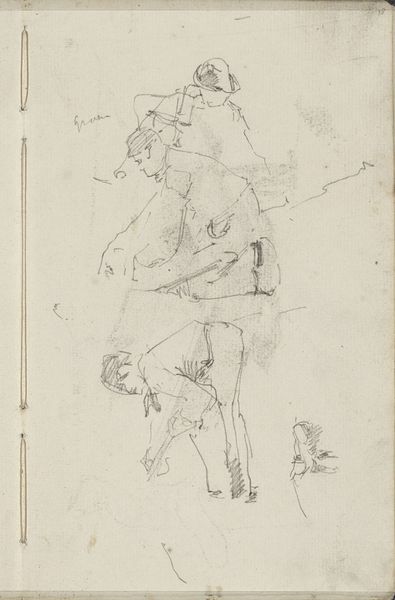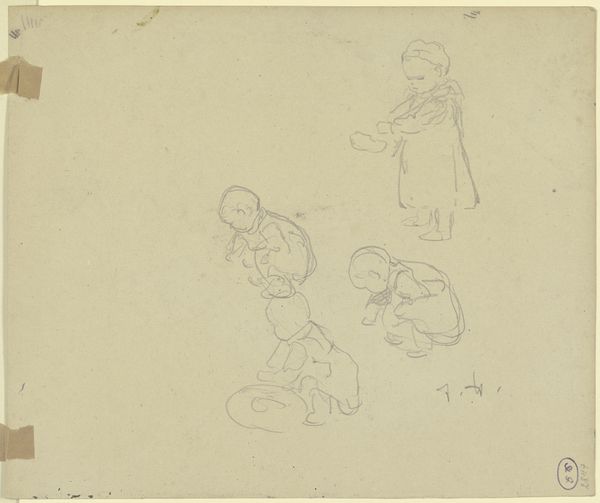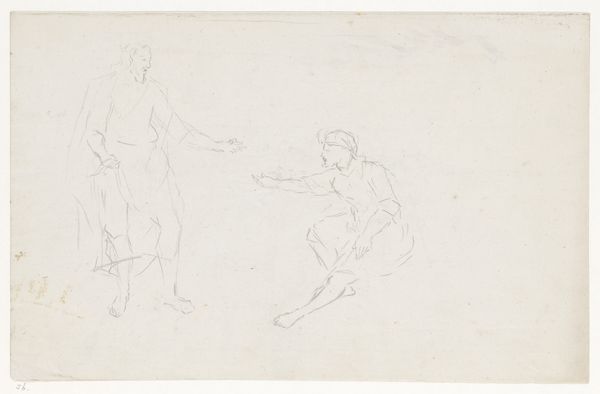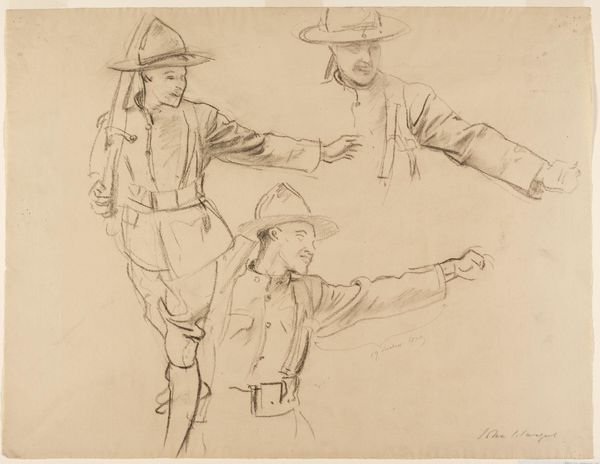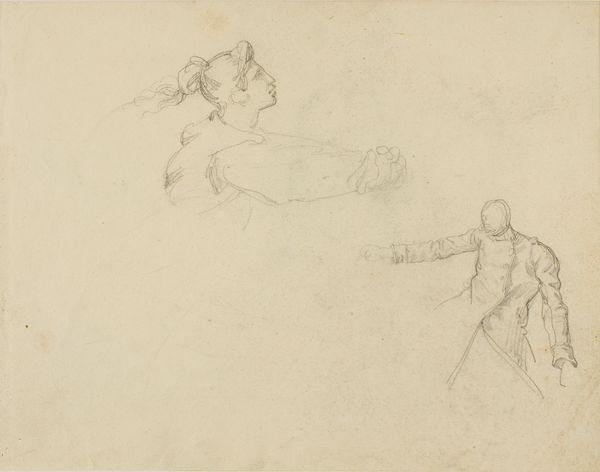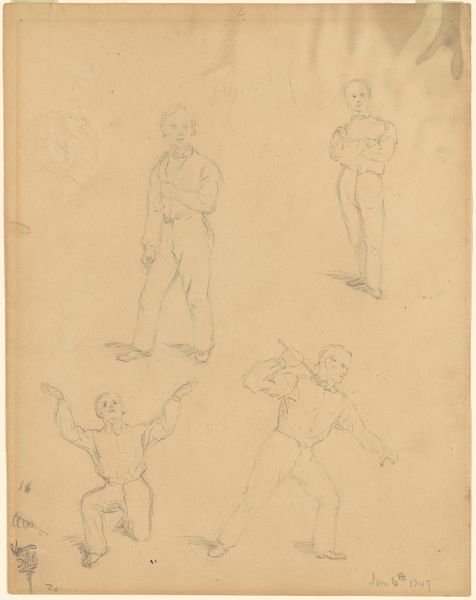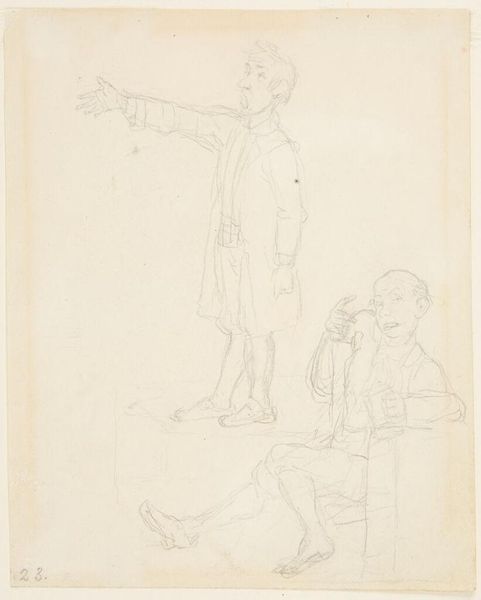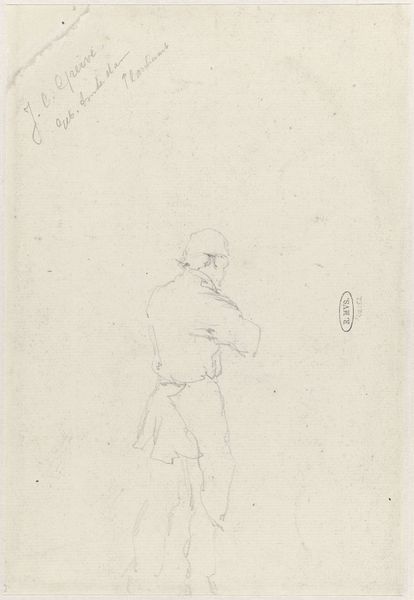
drawing, pencil
#
portrait
#
drawing
#
figuration
#
romanticism
#
pencil
#
genre-painting
Dimensions: 165 mm (height) x 129 mm (width) (bladmål)
Curator: Today, we're examining Christen Købke's "Three Studies of Neapolitan Fishermen," dating from 1838 to 1840. What’s your immediate take on this pencil drawing? Editor: Sparse and almost clinical. The lines are precise, the figures rendered with a stark simplicity. It feels like an anatomical study, rather than a romantic depiction of labor. Curator: Indeed. Købke wasn’t just capturing likenesses, but rather examining the very fabric of labor and daily life in Naples. These aren't idealized figures; we see the real clothes they wore and their interactions with materials around them. The means by which these fishermen sustained their livelihoods, drawing heavily on local marine resources, are central to the artist’s observations. Editor: But the romantic influence is undeniably there. Notice how the figures, though simply rendered, are idealized in their postures, almost heroic despite the ordinariness of their task. Købke focuses on formal structure rather than the explicit emotions one associates with romanticism. The lines create forms that are self-contained and subtly beautiful in their own right. Curator: I agree. The sketches offer insight into the production of artistic knowledge, exploring class and work at this time. Købke documents a specific social sphere in his sketches of working class people. Editor: Do you feel like the choice of pencil, given its relative availability and ease of use at that time, affected the final result aesthetically? Perhaps leading to the rather unfinished mood, as well as the relatively small size? Curator: Absolutely. Pencil enabled portability, allowing him to record quickly in diverse locales, not to mention providing affordability in production materials to a larger range of artists at the time. The immediacy is key. We see not just the final image, but traces of the artistic process itself. Editor: Interesting, very interesting to consider the effect of the medium on this specific composition, adding yet another dimension of understanding for these studies of fishermen. Curator: These Neapolitan studies shed light on daily toil through quick observational sketches, leaving room for a richer analysis of materiality. Editor: And from a purely formal perspective, we glimpse Købke's grasp of the human form stripped bare of embellishment. A raw elegance emerges from such precise yet spare lines, a fine way to round off our observations today.
Comments
No comments
Be the first to comment and join the conversation on the ultimate creative platform.

